We’re wrapping up our list of good things that you can find in each neighborhood of Chicago. Take a look back at Part 1, Part 2, and Part 3.
58. Brighton Park: Zemsky’s Family Fashions, 4181 S. Archer Ave.
Zemsky’s has been clothing the Southwest Side’s working class since 1958, making it one of the few businesses to survive the neighborhood’s transition from Polish to Latino. A yellow sign for Milwaukee Shoes hangs over the sidewalk. Inside are racks of Carhartt jackets, Dickies pants, and Uno Charter School Uniforms. Zapato Esoclar Para Ninos start at $16.99. Even before it was Zemsky’s, it was the Archer Avenue Big Store, according to the sidewalk plate in front of the door.
59. McKinley Park: Huck Finn Restaurant, 3414 S. Archer Ave.
Huck Finn, a 24-hour diner advertised by a sign depicting the Mark Twain character, is best known for its donuts. It’s also one of the few restaurants still serving liver and onions, so take your grandparents here.
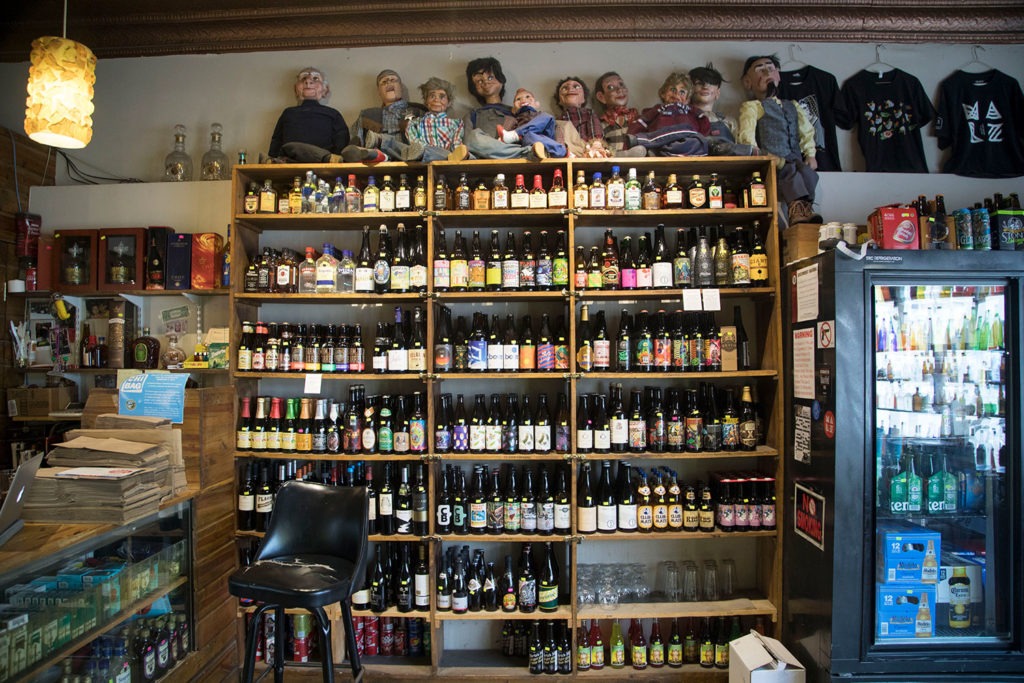
60: Bridgeport: Maria’s Packaged Goods and Community Bar, 960 W. 31st St.
There’s a lot going on in this little joint. It’s a slashie, a combination liquor store/bar with a craft beer menu. It’s also attached to two restaurants that deliver food to the bar. Pizza Fried Chicken Ice Cream is self-explanatory. Kimski’s is the city’s — and maybe the world’s — only Polish/Korean fusion restaurant. Kimski’s Polish sausage is served with kimchi sauerkraut, its poutine with pickled red onions and shishitos.
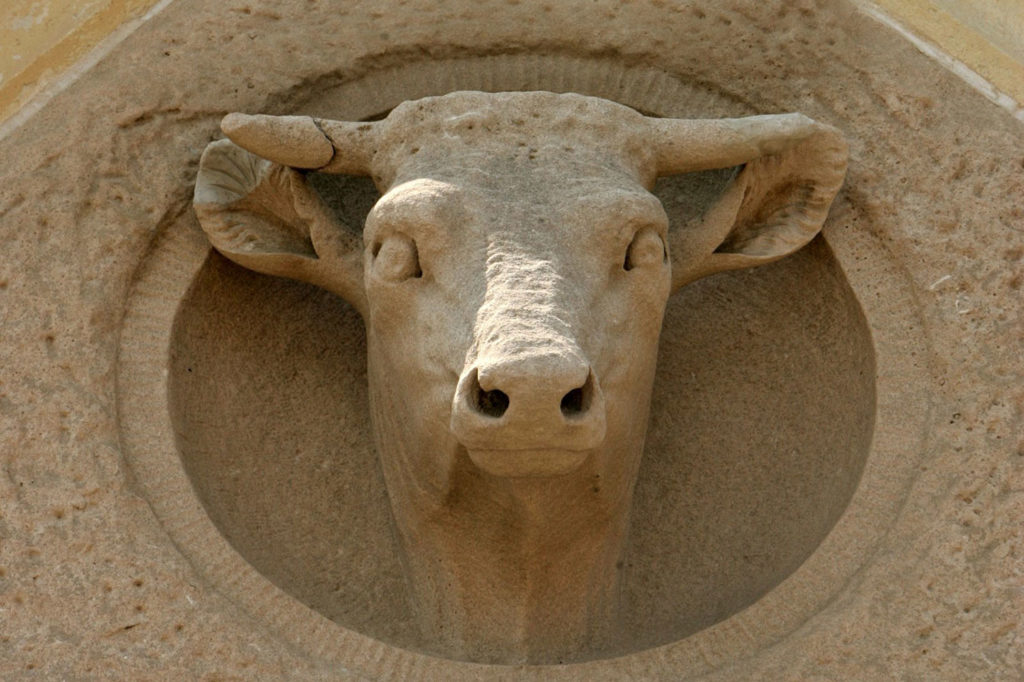
61: New City: Union Stockyards Gate, W. Exchange Ave. and S. Peoria St.
Millions of cows, pigs, and sheep were driven toward their deaths through this stone arch before the stockyards closed in 1971. Even today, the smell of bacon wafts past the gate, from a nearby meat processing plant. The gate was designed by Burnham & Root. Daniel Burnham’s father-in-law owned a farm in then-rural Washington Heights, so Burnham placed at the peak a bas-relief of the old man’s favorite steer. Behind the gate is a memorial to Chicago’s fallen firefighters: 21 died putting out a fire at the Morris Meatpacking Co. in 1910.
62: West Elsdon
This is a residential neighborhood. You don’t want to visit, and they probably don’t want you there, either. Also, why does Chicago have a West Elsdon, but not an East Elsdon?
63: Gage Park: Gage Park Fieldhouse, 2411 W. 55th St.
This neoclassical building is striking on the outside, with its diamond-shaped concrete accents, and even more so on the inside, which contains two historic murals. The first, by Depression-era muralist Tom Lea, depicts Midwestern settlers leading a covered wagon, with Marquette and Joliet in the background. (Completed in 1931, it’s not a WPA mural, but is in the same style.) Another presents a traditionally dressed Eastern European family, of the type that once lived in Gage Park, engaged in the Old Country folkways of fiddling and weaving.
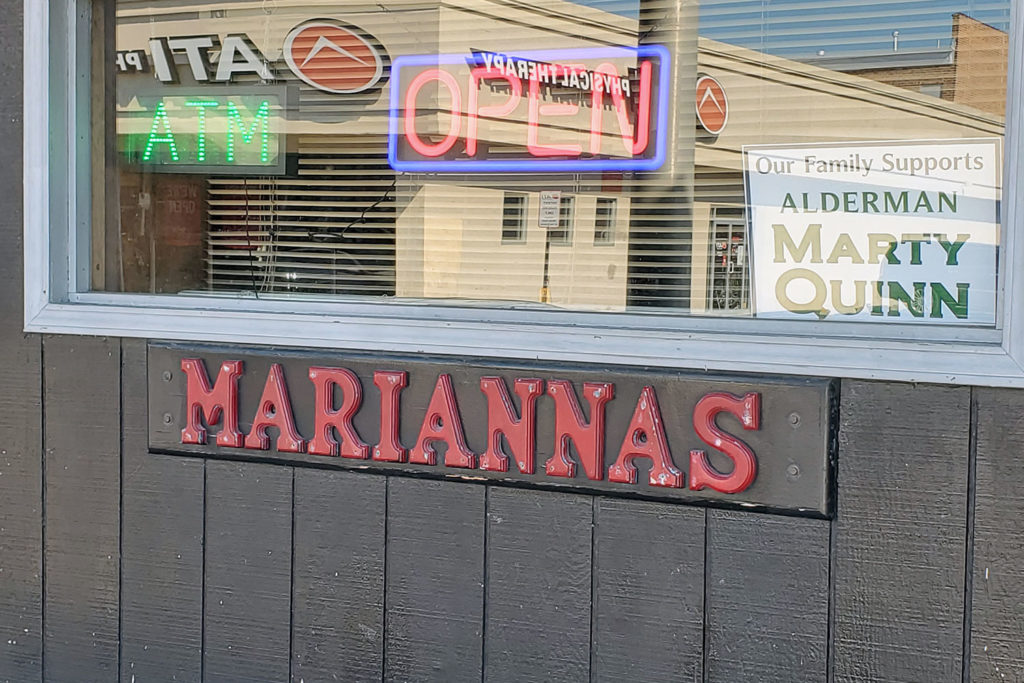
64: Clearing: Marianna’s Place, 5625 W. 63rd St.
Cans of Stroh’s and PBR for $1.50. That should be enough to attract anyone to this neighborhood tavern beneath the Midway Airport flight path. Warning: some of the patrons have really bad teeth.
65: West Lawn: Midwest Eye Clinic, 6254 S. Pulaski Rd.
Not because you need to go all the way to West Lawn to have your eyes examined, but because this optometry office is beneath a statue of a giant Native American, raising his right arm — a Southwest Side landmark. The statue is a traditional Cigar Store Indian, erected to promote a tobacconist who once did business on this corner. Now, it wears a pair of eyeglasses and a sign on its chest: EYE CAN SEE YOU NOW.
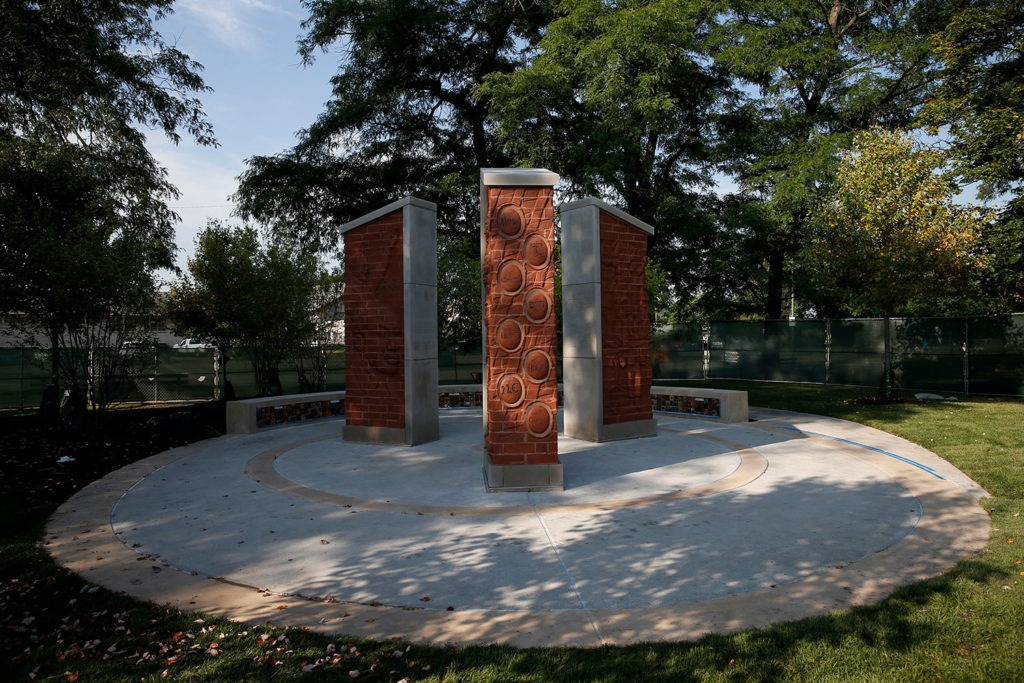
66: Chicago Lawn: The Dr. Martin Luther King Jr. Living Memorial, 6743 S. Kedzie Ave.
When Martin Luther King marched in Marquette Park in 1966, he was hit in the head by a rock, thrown by a white resident who didn’t want Black people in the neighborhood. Eventually, integration came to the Southwest Side, and whoever threw that rock probably moved to Oak Lawn in fear and disgust. This memorial was erected on the 50th anniversary of King’s march. It’s a set of three brick pillars, depicting King, the marchers, and the word “Home” in the languages of the many nationalities who have settled around Marquette Park.
67: West Englewood: Englewood Branded, 1546 W. 63rd St.
Corie Luckett is Englewood all the way. He’s a graduate of Englewood High School, he lives in Englewood, and he owns and operates Englewood Branded, a clothing boutique selling t-shirts featuring a cartoon bear named E-Dub, a neighborhood mascot. “There are not too many businesses owned by people in the neighborhood,” Luckett says. “The city needs to support businesses here and provide capital. Anything can grow if you water it.”
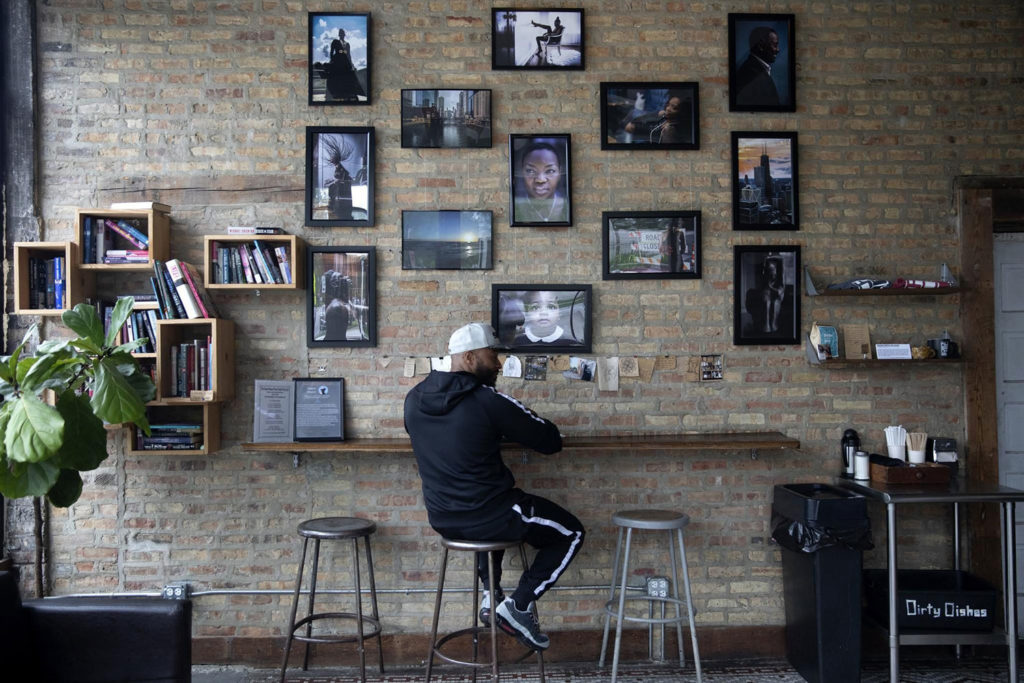
68: Englewood: Kusanya Cafe, 825 W. 69th St.
A corner coffee and sandwich shop that displays work by South Side artists and holds yoga classes and open mic nights. The name means “to gather” in Swahili. If it looks like it doesn’t belong in Englewood, neither does its owner: Phil Sipka moved there from the small town of Alma, Michigan.
69: Greater Grand Crossing: Soul Veg City, 203 E. 75th St.
Soul Veg City has been serving vegan food on the South Side since 1981, the first all-plant-based restaurant in a city famous for its meat culture. Its Italian V and Chicago Style Frank are vegan versions of local staples. The restaurant’s founder, Prince Asiel Ben Israel, who died last month, was a member of the African Hebrew Israelite community, leading a colony to Israel in the 1960s.
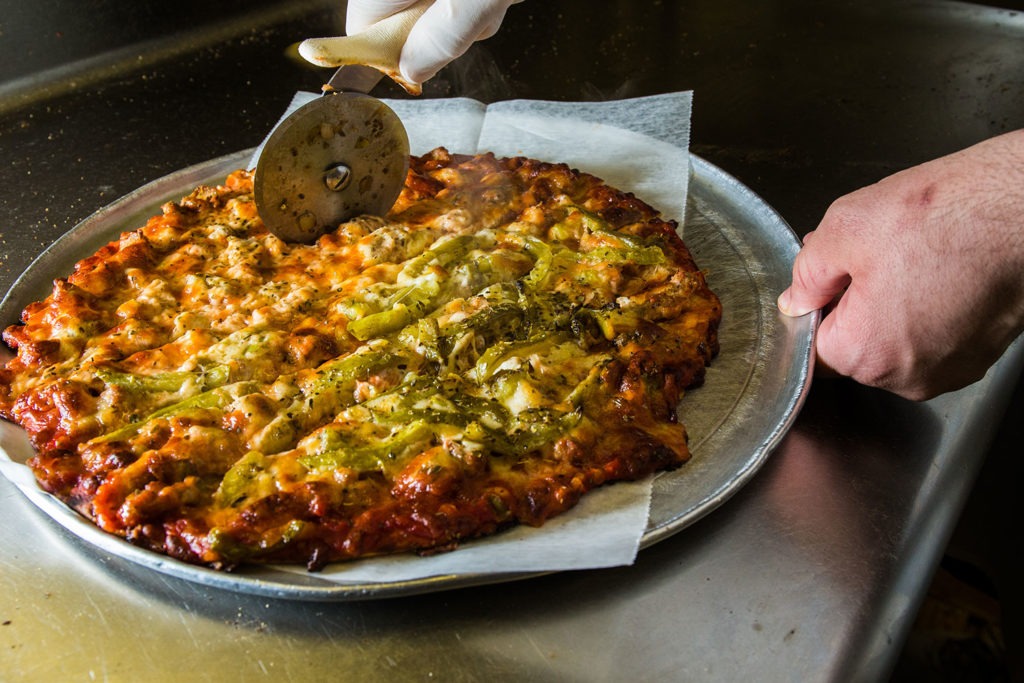
70: Ashburn: Vito & Nick’s Pizzeria, 8433 S. Pulaski Rd.
Ask any Chicagoan: thin crust, not deep dish, is the real Chicago pizza. Also, no restaurant serves better thin crust than Vito and Nick’s. On a trip home from Springfield, I stopped in Joliet to call in a take-out order. It added an hour to my trip home, but I got to eat gooey cheese and spicy sauce ladled onto the crispiest crust I’d ever tasted. Vito and Nick’s also has a bar where locals sit and look sort of lost without cigarettes in their hands.
71: Auburn Gresham: St. Sabina Catholic Church, 1210 W. 78th Pl.
In 2000, I had an experience that may have been unique in the history of journalism: Barack Obama held a press conference, and I was the only reporter who showed up. Obama was running for Congress against Bobby Rush and had the support of St. Sabina’s activist priest, Father Michael Pfleger. They wanted to talk about…banning bidi cigarettes. Obama lost that election badly, but went on to bigger things, and better-attended press conferences.
72: Beverly: Wrong’s Tap, 10014 S. Western Ave.
It has been written that the Classic Chicago “Superfans” Accent is dying out. It can still be heard at this bare bones sports bar, especially during Bears games. “Hey, what are da squares for dis quarter?” a patron called out during a game the Bears were winning by a field goal. “Zero and chree!” came the answer. The fact that the Bears were playing the Jags just added to the effect.
73: Washington Heights: Trinity United Church of Christ, 400 W. 95th St.
When Barack Obama was a community organizer, he had to choose a home church because he was working with so many religious organizations. However, he wanted to choose one outside the boundaries of the Developing Communities Project, to avoid accusations of favoritism. He chose Trinity, a congregation of South Side middle-class strivers. Its pastor, Rev. Jeremiah Wright, officiated at Obama’s wedding to Michelle Robinson — but got Obama in trouble during the 2008 presidential campaign because he had compared America’s foreign and domestic policy to terrorism.
74: Mount Greenwood: Blackthorn Pub, 3300 W. 111th St.
Mount Greenwood, a neighborhood of cops and firefighters, where 10 percent of residents receive a city paycheck, gets dragged because it’s an outpost of conservatism in a liberal city. It’s true that Donald Trump won some of Mount Greenwood’s precincts 2-1. That means, though, that Mount Greenwood is one of the few neighborhoods where residents have political differences to debate. When I visited the Blackthorn Pub, half the old men who had come to the bar to solve the world’s problems were Trump voters, and half were Biden voters. They defended their choices while sharing a round of beers, with no rancor.
75: Morgan Park: I-57 Rib House, 1524 W. 115th St.
According to a recent article in the Tribune, Chicago-style barbecue “is getting harder to find in the city it’s named for,” replaced by new restaurants that “look to Central Texas for inspiration.” The pig painted on the corrugated siding of I-57 should tell you that Chicago-style is still served at I-57: small tip, large tip, tip and wing, tip and link, full slabs of ribs, with sides of hush puppies, cole slaw and okra.
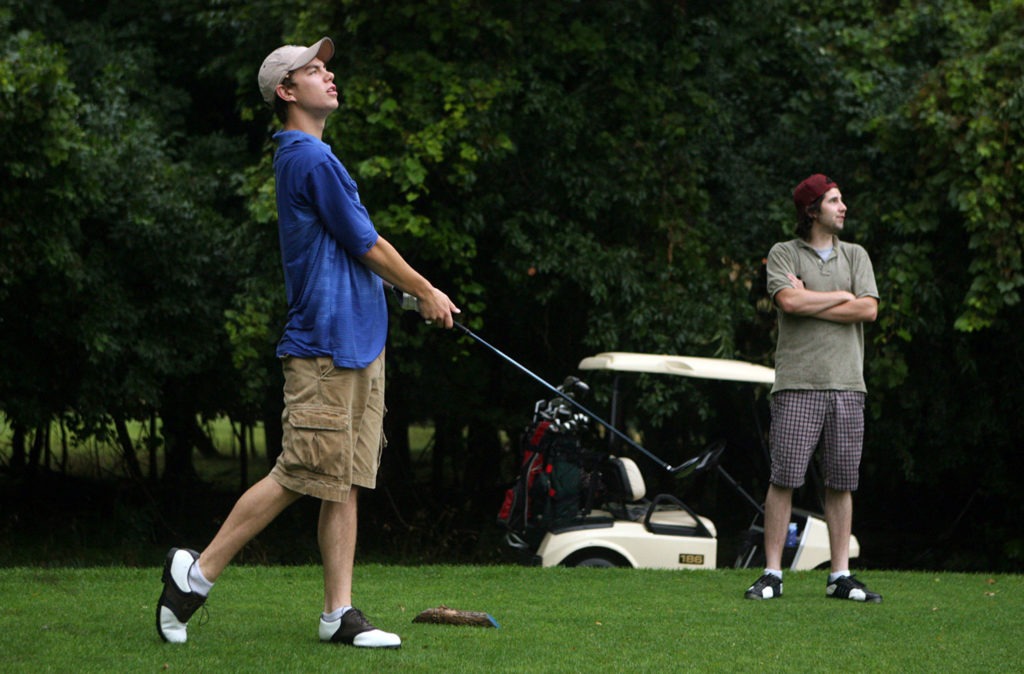
76: O’Hare: Indian Boundary Golf Course, 8600 W. Forest Preserve Ave.
O’Hare is not just an airport, it’s a community area, annexed in 1956 to provide a strip of land joining the city to what Mayor Richard J. Daley once called “The Crosswords of America.” Most of the land gained in that annexation consisted of Cook County Forest Preserves. In one of those preserves is an 18-hole golf course.
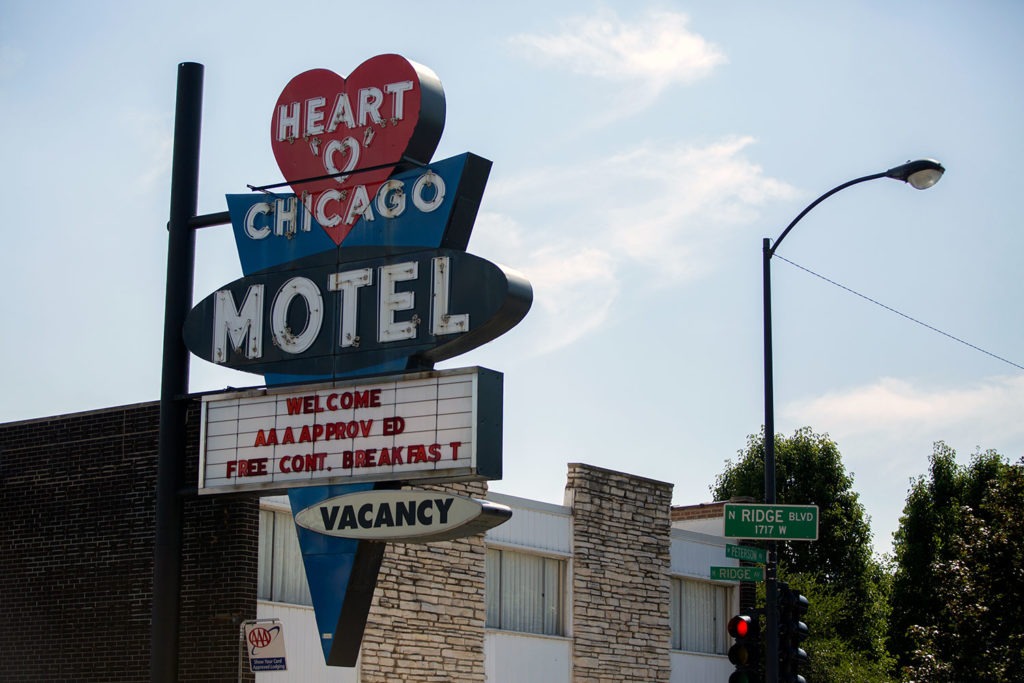
77: Edgewater: Heart O’ Chicago Motel, 5990 N. Ridge Blvd.
When Heart O’ Chicago opened in 1957, neon was the most eye-catching method of attracting travelers. Edgewater has changed since then, but Heart O’ Chicago’s sign — a red heart atop a blue arrow — has not. Owner Scott DeGraf, son of the founder, is so scrupulous about preserving the sign that he flies to Las Vegas, the neon capital, for replacement parts. The sign is too tall, and hangs over the sidewalk, so the city would never let him replace it. As one of the city’s last remaining neon landmarks, the sign appears on refrigerator magnets and art show photos of vintage Chicagoana — free advertising for a little motel far from the highways.



